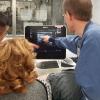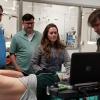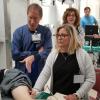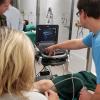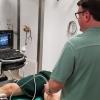NOTE: Because of the COVID-19 pandemic, RASCI and other CME events are either postponed or, where appropriate, moved online until further notice.
Purpose
RASCI Ultrasound workshops offer basic and advanced teaching and hands-on practice in ultrasound-guided regional anesthesia. Demonstration of all surface anatomy, nerve block and catheter techniques are on human volunteers. Highly valuable and unique hands-on sessions include small group ultrasound scanning on human volunteers and phantoms, as well as nerve block and catheter technique practice on anesthetized pigs, all under direct guidance of expert regional anesthesia faculty members.
The intended audience includes:
- Anesthesiologists
- CRNAs
- Anesthesia Assistants
Educational Objectives:
After attending this course, learners should be able to:
- Identify the relevant anatomy for the basic ultrasound-guided upper and lower extremity blocks and the transversus abdominis plane block.
- Demonstrate the ability to obtain the relevant images using ultrasound for the basic upper and lower extremity blocks and the transversus abdominis plane block.
- Identify where the needle tip is relative to the expected nerve location for each of the blocks demonstrated.
- Exhibit clinical judgment of when to use regional anesthesia on patients appropriately, so as to achieve the highest success in outcomes, and fewest complications.
- Comprehend on a deep level, the indications, contraindications, and practical pearls related to upper and lower extremity blocks and the transversus abdominis plane block.
- Describe the etiologies of block-related nerve injuries.
- Analyze the lack of difference in the rate of nerve injuries since ultrasound has become commonly used.
- Use anatomy identification to avoid needle contact with nerve.
- Describe the value of using techniques to detect potential intraneural injection to avoid high pressure injections.
